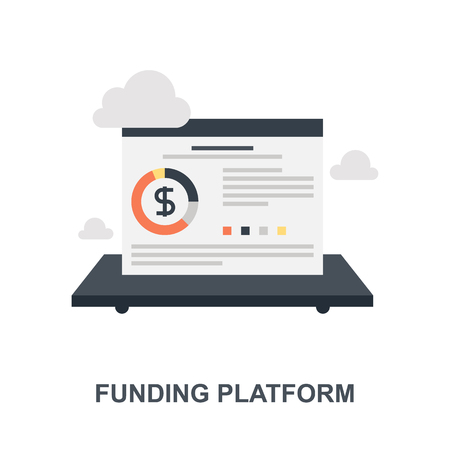Introduction: The Pre-COVID Licensing Landscape
Before the COVID-19 pandemic, getting a business license or permit in the United States followed a pretty standard process. Most entrepreneurs had to work with city, county, and state agencies to get approval before opening their doors. While every state and industry had its own requirements, there were some common steps that nearly everyone experienced.
Typical Steps in Business Licensing and Permitting
| Step | Description |
|---|---|
| Research Requirements | Find out which licenses or permits are needed for your specific type of business and location. |
| Prepare Documents | Gather documents like proof of address, identification, business plans, and sometimes even background checks. |
| Submit Applications | File paperwork with the right local or state agency, often in person or by mail. |
| Pay Fees | Pay the required application fees, which could range from small amounts to hundreds of dollars. |
| Wait for Approval | Agencies reviewed applications, sometimes requiring additional information or inspections. |
| Receive License/Permit | If approved, receive official documentation allowing you to operate legally. |
Common Challenges Faced by Entrepreneurs
- Bureaucratic Delays: Many applicants waited weeks or even months for approvals because of slow processing times and limited staff at government offices.
- Piles of Paperwork: Forms were often confusing, repetitive, and only available in paper format. Online applications were not always an option.
- Lack of Clear Guidance: New entrepreneurs struggled to understand exactly what was required for their specific business type or location.
- Multiple Agencies Involved: Depending on your business, you might need approval from several different departments—health, fire safety, zoning, and more.
- In-Person Requirements: Many steps had to be done in person at city halls or county offices during business hours, making it hard for people with other jobs or family responsibilities.
The Impact on Small Businesses and Startups
This complicated system made it tough for small business owners and startups to get off the ground quickly. For many first-time entrepreneurs, the licensing process felt like a major barrier before they could even start serving customers or generating revenue. Understanding this pre-pandemic landscape sets the stage for how things changed when COVID-19 arrived and forced cities and states to rethink these processes almost overnight.
2. Digital Transformation and Remote Processing
Before the COVID-19 pandemic, getting a business license or permit often meant waiting in long lines at city offices, filling out paper forms by hand, and meeting inspectors face-to-face. The pandemic changed all that almost overnight. With social distancing and lockdowns in place, government agencies had to find new ways to keep the process moving while keeping everyone safe. That’s when digital transformation really took off.
How Did Things Change?
Many cities and states quickly moved their licensing and permitting systems online. What used to require physical paperwork and in-person appointments could now be done from your laptop or phone at home. Here’s what changed:
| Before COVID-19 | After COVID-19 |
|---|---|
| Paper applications filled out by hand | Online application forms available 24/7 |
| In-person visits to government offices | No-contact submissions via website portals |
| Physical signatures required on documents | E-signatures accepted for most forms |
| On-site inspections only | Remote inspections using photos or video calls |
| Long wait times for approvals | Faster processing thanks to digital workflows |
E-Signatures and Online Payments
The shift to digital also meant that businesses no longer needed to print, sign, scan, and mail documents. E-signatures became widely accepted, making it much easier to sign contracts and official papers online. Many agencies also set up secure payment systems so you could pay fees with a credit card instead of writing checks or bringing cash.
Remote Inspections: A New Norm
Another big change was the introduction of remote inspections. Instead of waiting for an inspector to show up in person, some agencies now allow you to submit photos or do a live video walkthrough of your space. This saves time for both business owners and inspectors, helping everyone stay safe while keeping things moving.
The Bottom Line: More Convenience for Everyone
Thanks to these changes, business owners can now handle most licensing and permitting tasks from anywhere. The digital tools brought in during the pandemic aren’t just temporary fixes—they’ve become the new standard across many parts of the U.S., making life a little easier for entrepreneurs everywhere.

3. Expansion of Online Business Categories
The COVID-19 pandemic dramatically accelerated the shift toward online businesses and home-based operations. As people stayed home and traditional storefronts faced restrictions, entrepreneurs found new ways to serve customers—from launching e-commerce shops to starting delivery services out of their homes. This rapid growth in virtual businesses brought big changes to business licensing and permitting in the United States.
How Licensing Authorities Adapted
Before the pandemic, most licensing rules were designed with brick-and-mortar businesses in mind. But as more Americans started selling products or offering services online, local and state governments had to rethink these regulations. Licensing authorities updated their processes to make it easier for people to get permits for:
- Online retail stores
- Food delivery services
- Virtual consulting and coaching
- Home-based product manufacturing (like crafts or baked goods)
Key Changes in Licensing Rules
| Business Type | Pre-COVID Requirements | Post-COVID Adaptations |
|---|---|---|
| Online Retail | Physical location inspections, local zoning approval | Simplified online registration, fewer in-person checks |
| Delivery Services | Commercial vehicle permits, strict health codes | Flexible vehicle use, streamlined health and safety training online |
| Home-Based Businesses | Zoning restrictions, limited signage allowed, special home occupancy rules | Eased zoning laws, digital permit applications, clearer guidance for homeowners |
| Virtual Services (Consulting/Coaching) | In-person interviews, office address required | No physical address needed, fully digital application process |
The Impact on Entrepreneurs
This expansion of online business categories has lowered the barriers for Americans wanting to start a side hustle or launch a full-time venture from home. With friendlier rules and faster digital processes, more people can turn their skills and ideas into real businesses—even without a storefront or big investment.
4. Regulatory Flexibility and Temporary Permits
When COVID-19 hit, many cities and states across the U.S. realized that traditional business licensing and permitting processes were too slow and rigid for the crisis at hand. To help businesses survive during these challenging times, local and state governments quickly adopted emergency measures, making it easier to get started or stay open.
Emergency Measures: A Fast Track for Businesses
Many authorities introduced special rules that allowed businesses to operate with fewer restrictions or faster approvals. For example, restaurants got temporary permits to offer outdoor dining, even if they had never done so before. Retail stores were allowed curbside pickup with minimal paperwork. These changes happened almost overnight, showing how government agencies could respond quickly when needed.
Examples of Regulatory Flexibility
| City/State | Temporary Permit Offered | Main Benefit for Businesses |
|---|---|---|
| New York City | Open Restaurants Program (outdoor dining) | Restaurants stayed open by serving customers outside |
| California | Curbside Retail Permits | Retailers sold goods without indoor access limits |
| Texas | Temporary Food Establishment Licenses | Pop-up kitchens and food trucks operated more freely |
| Chicago | Expedited Business License Applications | Faster approval for new ventures responding to the pandemic |
Flexibility in Requirements: Less Red Tape
A lot of the usual red tape was cut. Instead of requiring full inspections or detailed paperwork upfront, some cities allowed businesses to self-certify safety measures or submit documents later. For example, pop-up shops or mobile vendors could get a temporary permit by simply promising to follow health guidelines.
What This Means for Businesses Today
The willingness to adapt rules and offer temporary solutions helped many small businesses weather the storm. It also showed that local governments can be flexible and innovative—qualities that may continue shaping business licensing and permitting long after the pandemic.
5. Long-Term Changes and What They Mean for Entrepreneurs
Pandemic-Era Changes That Are Here to Stay
The COVID-19 pandemic forced many U.S. cities, counties, and states to rapidly update their business licensing and permitting processes. While some adjustments were temporary, several have become permanent parts of the landscape. Understanding which changes are here to stay can help entrepreneurs navigate licensing more efficiently in 2025 and beyond.
Key Permanent Changes
| Pandemic-Era Change | What’s Different Now? |
|---|---|
| Online Applications | Most agencies now offer fully digital applications, replacing or minimizing the need for in-person visits. |
| Virtual Inspections | Certain inspections (especially for home-based or remote businesses) can be completed through video calls or photo uploads. |
| Flexible Documentation Requirements | Many jurisdictions accept digital signatures and scanned documents instead of originals. |
| Extended Deadlines and Grace Periods | Renewal periods are often longer, with more flexibility for late submissions due to unforeseen events. |
Practical Advice for Navigating the New Licensing Landscape
1. Get Comfortable with Digital Tools
If you haven’t already, make sure you’re familiar with your local government’s online portals for business licenses and permits. Most processes are now digital-first—saving time but requiring a bit of tech-savviness.
2. Keep Digital Copies of All Documents
Scan and securely store all essential business documents. Many agencies may request uploads or digital versions at various points in the process.
3. Check for Updated Rules Frequently
Laws and requirements can change quickly. Bookmark your city or county’s official business licensing site and review it regularly for updates, especially when renewing licenses or expanding services.
4. Take Advantage of Virtual Support
Many departments now offer video consultations, live chat support, or webinars on navigating permitting requirements. Use these resources—they’re designed to help!
5. Understand Industry-Specific Adjustments
| Industry | Pandemic-Era Shift |
|---|---|
| Food Service | Permits for outdoor dining became more accessible; some cities made these changes permanent. |
| E-Commerce/Retail | Easier licensing for home-based operations and pop-up shops in response to shifting consumer habits. |
The bottom line: COVID-19 accelerated modernization in business licensing, making many processes faster and more flexible—but also more reliant on technology. As an entrepreneur, staying proactive and adaptable is key to thriving in this new environment.


